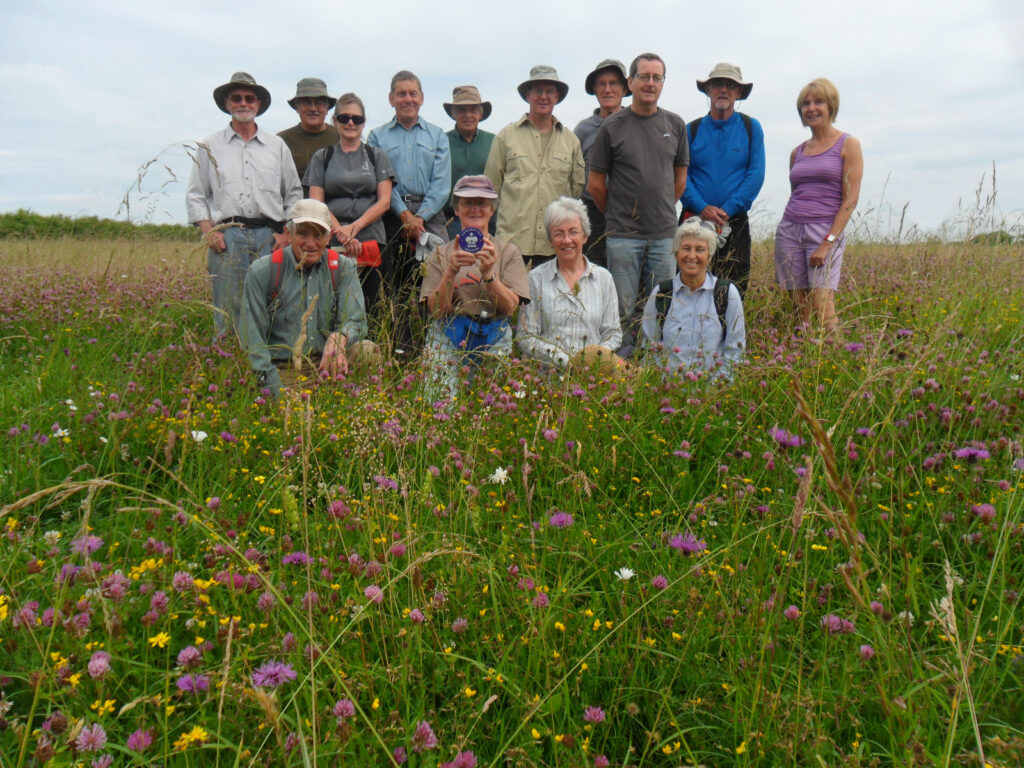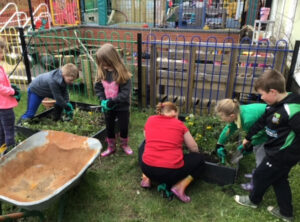New audit reveals success of Coronation Meadows.

Ten years ago, the former Prince of Wales launched Coronation Meadows in 2013 to honour the 60th year of the late Queen’s accession to the throne.
In the face of the catastrophic loss of 97% of our wildflower meadows since the 1930s, the plan was to create new and restored meadows using donor seed from remaining fragments of ancient and traditional meadows.
The Wildlife Trusts and Plantlife – charities for whom the former Prince of Wales was patron – worked together to identify 60 species-rich meadows which are known as Coronation Meadows, one for every year of the Queen’s reign at that time. These special places became donors to provide precious seed to increase the amount of valuable and beautiful wildflower habitat elsewhere.
The charities have done an audit of the success of the project which reveals that a fantastic 101 new wildflower meadows have been created or restored since the Coronation Meadows project began a decade ago.
The charities are delighted that the Coronation Meadows project has increased the number of wildflower meadows and benefitted a vast array of wildlife, from bees and butterflies to bats and birds. The area is still expanding as the charities continue to harvest and spread the wildflower seed in localities close to the original sites so that the distinctive character of each area’s flora is preserved.
Biffa Award, through the Landfill Communities Fund, contributed £1million to fund the equipment and training needed for meadow restorations. In the first three years of the project alone, more than 700 volunteers gave their time to get the project off the ground. Seed was harvested from Coronation Meadows donor sites either as green hay, brush harvested seed or by hand, and this was used to seed second sites in the same area.
Craig Bennett, chief executive of The Wildlife Trusts, says:
“The expansion of our beautiful wildflower meadows is a wonderful legacy for communities everywhere to enjoy. The magnificent sight of wild orchids shimmering in a field of delicate wild grasses in the afternoon sun to the hum of bees is something that everyone deserves to experience and enjoy.
“As the nature and climate crises deepen, we must be bold if we want to reverse declines and help revive our meadow heritage. Ancient meadows have evolved alongside traditional farming methods over hundreds of years. Many of these have been selected as Local Wildlife Sites because of the rare and threatened plants that are found there but they have limited protection in planning policy. The next review of the National Planning Policy Framework later this year must see their protection strengthened. We also need to see greater support for wildflower meadows in the new farm environment schemes – it is critical that farmers are rewarded for restoring locally distinctive natural habitats where wild plants can thrive.”
Ian Dunn, CEO, Plantlife, says:
“If you can, this Coronation year, make the opportunity to sit within an area of meadow or uncut grass. Look around at the colours and variety of plants. Then close your eyes and sense your surroundings through sound and smell. You’ll be amazed, reconnected with nature and feel just fantastic!
“We know healthy habitats such as meadows form the foundations of all successful conservation, as well as being at the roots of a healthy society and in addressing the climate challenges we face. At Plantlife we aspire to create a combined area equal to 20,000 new football fields of meadows before the end of this decade to give everyone the chance of experiencing the beauty and wildlife-rich meadows that were once commonplace. The exquisite Coronation meadows started 10 years ago give us confidence we can do so.”
Case studies – newly created recipient Coronation Meadows
Thameside Nature Discovery Park, Essex
The new meadow here is not a conventional one – it sits atop a landfill site which took London’s rubbish for 50 years. Green hay was taken from Essex Wildlife Trust’s Langdon Nature Discovery Park donor site and was spread here on the same day that it was collected in order to ensure the freshness of the seed. The new six hectares of grasslands are alive with the sound of skylarks and shrill carder bees. Thameside Nature Discovery Park
Eycott Hill, Cumbria
An extinct volcano, this special upland is cared for by Cumbria Wildlife Trust and has wetlands, moorland and restored meadows which were enhanced with seed from the wonderful Coronation Meadow, Piper Hole. Autumn hawkbit, melancholy thistle and eyebright bloom in this awe-inspiring spot which is increasing in flora every year. Eycott Hill
Middledown, Somerset
Look out for lady’s bedstraw, early purple, common spotted, green-winged orchids and ploughman’s spikenard at this heavenly meadow which is alive with butterflies on a warm day. The seed was brush harvested from Chancellor’s Farm Coronation Meadow and spread by hand by Somerset Wildlife Trust volunteers. Local school children also helped to grow and plant plugs of other key species such as bird’s-foot trefoil, knapweed and cowslip. Middledown
Gwynedd road verges, Wales
The stunning flower-rich mosaic of small fields at the magical Caeau Tan y Bwlch Nature Reserve, is cared for by North Wales Wildlife Trust and owned by Plantlife. In 2022 roadside verges near the 2023 Eisteddfod site in Boduan were recipients of its green hay and will welcome visitors with colourful flowers, buzzing with life. Seed from Caeau Tan y Bwlch has also been spread along the main road outside Gwaith Powdwr Nature Reserve in Penrhyndeudraeth. Caeau Tan y Bwlch Nature Reserve here and here; Gwaith Powdwr
Red Hill, Lincolnshire
A former barley field, 60-acre Red Hill became a Coronation Meadow after huge restoration by Lincolnshire Wildlife Trust – now it is one of the best chalk downland meadows in the county. Volunteer, Harry Turner, an octogenarian at the time, planted thousands of cowslips at Red Hill – watch him on BBC Gardeners’ World here. Red Hill expanded to take in a former festival site nearby called Badger Farm – this became a new recipient meadow using Red Hill’s seed, with devil’s-bit scabious, cowslip, bird’s foot trefoil, bee orchids and autumn gentian. Red Hill
Hurstans, Sollers Hope, Herefordshire
Seed from Joans Hill Coronation Meadow, a Plantlife nature reserve, was brush harvested and spread across the 3.6ha field at Hurstans. Hurstans is now a traditional hay meadow, with an annual hay cut and grazing over the winter, and now boasts a healthy population of Green Winged Orchids. Last year the landowner, who belongs to Herefordshire Meadows charity and the local meadows farm cluster group was delighted when Hurstans was declared a special place for nature and became a new county Local Wildlife Site. Herefordshire Meadows
Hurdley Meadows, Montgomeryshire When this site was restored, there were 5 flowering species, there are now over 70 including Great Burnet, Rough Hawksbeard, Globe Flower, Devil’s Bit Scabious, as well as hundreds of Common Spotted and Early Marsh Orchids. In 2016 this heavily grazed site was harrowed and broadcast with seed from Ty Brith Coronation Meadow (Montgomeryshire Wildlife Trust). Experience the joy of the meadows on Jun 11th and July 9th, 2023, when the owners open their garden as part of the National Garden Scheme. Hurdley Hall
Marsden Old Quarry, South Tyneside
Marsden Old Quarry Local Nature Reserve, cared for by South Tyneside Council, is important for different types of grassland. In 2016 as part of the Coronation Meadows project, seed was harvested from part of the site to create a new patch of magnesian limestone grassland for specialist plants. A partnership with Durham University Botanic Garden led to the establishment on the reserve of two plant species – dropwort and small scabious – that are both relatively rare in County Durham. Marsden Old Quarry Local Nature Reserve.




